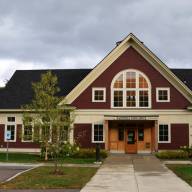Last Friday was our 143rd day of the session and was expected to end in adjournment. It's been a productive and collaborative effort these past months, with a focus on immediate needs for tax relief, housing, education, and health care. While other committees of conference reached compromise, including on health care and housing bills, conference committee negotiators at work on the comprehensive education reform bill (H.454), hit an impasse.
To enable ongoing negotiations, House and Senate leaders extended the session and will reconvene legislators on June 16. Our votes on the education reform bill we receive on June 16 will be 'yay' or 'nay', with no amendments permitted. Local legislators have been hearing from many constituents and educational leaders with concerns about how the Senate shifted important aspects of the House bill, and I share these concerns. House leaders are working now on a new proposal for consideration. A lot can change over the course of the next couple of weeks, and should, to ensure good outcomes for our students, schools, and communities in this transition. How I vote will depend on where things land.
In the current proposal, drawing up new school districts with meaningful public input is important. The proposed changes to how school governance will be organized involves trade-offs, starting with who gets to decide the number and size of larger school districts. Progress was made on this last week, as the committee of conference seemed to reach consensus on having a panel that will include people with educational expertise. The panel will conduct the needed research and engagement needed to recommend scenarios for consideration and voting by the Legislature next year.
NEW FUNDING FORMULA
Creating a new funding formula for predictable, stable funding that supports a quality education and is more affordable for taxpayers is critical. There's consensus for transitioning to a foundation formula, as used by most states, to accomplish these goals. Still not so clear is which funding formula to use, what the starting per pupil amount should be and how quickly we should implement the new funding mechanism. Senate negotiators proposed $14,541 per student in base funding (before any weights are added), which is below the current base amount, raising fears of underfunding. I support taking additional time on the funding formula and pupil weights, requiring new modeling ahead of implementation (now proposed for July 1, 2027, a year faster than the House originally proposed). Whether to allow over- or under-spending (up to 10%) by districts, as the Senate conferees proposed, is another area requiring some analysis before we can be expected to vote. Other issues still at play are whether to study new property tax classifications or move ahead with creating them, and how to fairly address independent schools. Follow committee action here – legislature.vermont.gov/committee/committeesofconference/2026.
Look for our end-of-session report that will appear in The Valley Reporter in coming weeks for more on education and the other significant legislation we passed this session. Please keep in touch with your questions and concerns -













